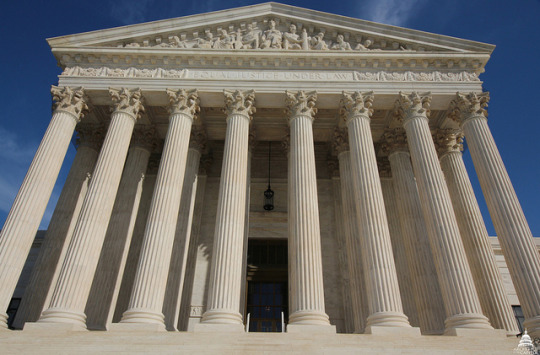
This post originally appeared on the Shapeways blog.
When a cheerleader wears her uniform, is she expressing her identity as a cheerleader or identifying herself as a cheerleader? And could the distinction ever even matter?
This is one version of the question that the U.S. Supreme Court wrestled with today. Its answers could have a big impact on how copyright interacts with 3D printed objects.
The Cheerleader Uniform Case Goes to Court
Today were the Supreme Court oral arguments in the Star Athletica v. Varsity Brands copyright infringement case, which you may remember as the case about cheerleader uniforms we’ve been writing about since lastyear. On its face, the case is about how and whether copyright should protect designs on cheerleader uniforms. We care about it here at Shapeways because it is really about how copyright interacts with objects that combine functional (traditionally not protected by copyright) and non-functional (traditionally protected by copyright) elements in one.
If you are thinking about licensing your 3D printed object or worried that someone is infringing on your work, the first thing you need to know is if the object is protected by copyright at all. The decision in this case could give us a single, clear rule to use in answering that question. Appropriately enough because this is Halloween, it will also be helpful for those of you who think about copyright in relation to costumes and cosplay.
Of course, while those larger questions linger in the backdrop of this case, the immediate question is about cheerleader uniforms. Specifically, it is about the designs on cheerleader uniforms.
As a general rule, copyright law views clothing as “functional” and therefore beyond the scope of copyright protection. In a nutshell, clothing is functional because it keeps you warm, dry, and not-naked. However, designs on clothing (think a flower print on a dress) can be protected by copyright. That is because the designs are not really functional, but rather separable aesthetic elements merely attached to the otherwise functional dress.
Why Are Stripes and Chevrons on Cheerleader Uniforms?
Much of the debate today was about the role of things like stripes and chevrons on cheerleader uniforms. Are they there for “expressive” (read: copyrightable) purposes so that the wearer can express her allegiance with cheerleaders? Or are they there for “functional” (read: not copyrightable) purposes so that the wearer can be identified as a cheerleader? And yes, this distinction also makes copyright lawyers’ heads hurt.
For a case about cheerleaders, there was a lot of discussion about camouflage in Court today. Camouflage as a design in a frame on the wall is probably protected by copyright. After all, on some level it is just an artful arrangement of colors that – at least in a frame on the wall – serves no obvious functional purpose.
However, if you print the same camouflage pattern on a shirt and pair of pants, it can suddenly have the very functional purpose of making it easier to hide in the woods. At that point the pattern would probably become functional and therefore – at least in the shirt and pants context – not eligible for copyright protection.
The stripes and chevrons on a cheerleader uniform can be thought of the same way. On a piece of paper in a frame on the wall, they are just an artistic collection of stripes and chevrons protected by copyright. On a uniform, they may serve important functional purposes: in addition to identifying the wearer as a uniform, they can make the wearer look taller or slimmer, or just reinforce various seams in the uniform itself.
Needless to say, there was also ample discussion of Duchamp, hanging shovels on art gallery walls, and what really constituted art.
What Does This Have to Do With 3D Printing Again?
Abstracted up a level, all of this discussion about putting parts of an object into functional and non-functional categories mirrors the analysis you would do to determine if a 3D printed object that is both functional and artistic would be protected by copyright.
In a previous post we flagged studiogijs’ birdsnest eggcup quattro as an easy example of this. It has functional (holding an egg) and non-functional (looks like a birds nest) properties. A rule coming out of the cheerleader uniform case could provide us with a rule to understand how – if at all – copyright might apply to the eggcup too.
What Happens Now?
It is always dangerous to make projections based on oral argument. It was pretty clear that at least some justices were wary of a decision that would pull all clothing into the world of copyright (at one point Justice Breyer worried that pushing copyright lines deep into clothing would “double the price of women’s clothes” for no real purpose). Many others struggled with how to draw the line between functional and non-functional elements of clothing.
It is no surprise that the Justices struggled drawing this line. Going into this case, there were at least ten different theoretical approaches that courts have used. Hopefully, the Supreme Court will come up with a single test that works for cheerleader uniforms, 3D printed objects, and everything in between.
We will find out once the written opinion is released during the first half of next year. Until then, you can read the transcripts or hear the audio of the arguments (don’t miss Justice Breyer – again – working to understand the relationship between clothing and the context by musing, “The clothes on a hanger do nothing, the clothes on a woman do everything.”) And let me know if you have thoughts or questions in the comments below or on twitter @MWeinberg2D.